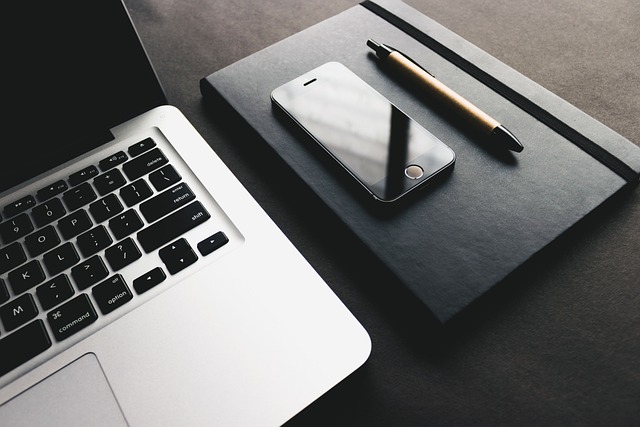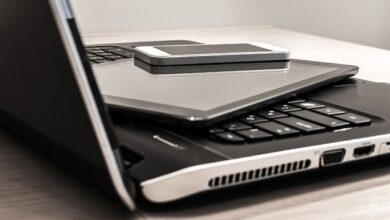
In the fast-paced world of technology, tablets have become an essential tool for both personal and professional use. The market is dominated by two main players: Apple’s iPad and a wide variety of Android tablets from manufacturers like Samsung, Lenovo, and Huawei. These devices cater to different user needs, with varying strengths and weaknesses in terms of hardware, software, ecosystem, price, and user experience. This article delves into the comparison between iPads and Android tablets, providing a comprehensive analysis that helps prospective buyers make an informed decision.
1. Design and Build Quality
One of the first aspects consumers notice about any tablet is its design and build quality. Apple’s iPads are renowned for their premium, sleek design, made from high-quality aluminum. The iPad’s design is consistent across its range, giving users a sense of familiarity with every new generation. The uniformity in build quality ensures that iPads feel robust, lightweight, and luxurious. They are available in various sizes, from the compact iPad Mini to the expansive iPad Pro, catering to different usage scenarios.
On the other hand, Android tablets come in a variety of designs, depending on the manufacturer. Brands like Samsung have significantly improved the design quality of their premium models, such as the Galaxy Tab S series, which feature aluminum bodies and high-end finishes. However, there are also many budget Android tablets made from plastic, which can feel less durable compared to an iPad. The diversity in design across Android tablets is both a strength and a weakness—consumers have more options to choose from, but not all devices offer the same level of build quality.
2. Display Quality
Display quality is a crucial factor, especially for users who plan to use their tablets for media consumption, gaming, or creative work. Apple iPads boast some of the best displays in the tablet market, with high-resolution Retina displays that offer vivid colors, sharp text, and excellent brightness levels. The iPad Pro, in particular, stands out with its Liquid Retina XDR display, featuring ProMotion technology for a smooth 120Hz refresh rate, making it ideal for artists, designers, and gamers alike.
Android tablets, particularly those from premium brands like Samsung, are also known for their impressive displays. Samsung’s Galaxy Tab S series, for instance, features Super AMOLED displays that deliver deep blacks, vibrant colors, and high contrast ratios, rivaling the iPad in terms of visual quality. While budget Android tablets may not offer the same level of display excellence, high-end models provide a comparable, if not superior, experience to the iPad, particularly in terms of color accuracy and contrast.
3. Operating System and Software
When comparing iPads and Android tablets, the difference in operating systems—iPadOS vs. Android—is one of the most significant distinctions. Apple’s iPadOS, a variant of iOS designed specifically for tablets, is known for its smooth, intuitive interface. It offers seamless integration with other Apple devices, making it the go-to choice for users already invested in the Apple ecosystem. iPadOS supports multitasking, has excellent app optimization, and provides long-term software updates, ensuring that even older iPads remain relevant with the latest features.
Android tablets, on the other hand, run on the Android operating system, which is more customizable than iPadOS. Android allows users to tweak their interface, install custom widgets, and even sideload apps from outside the Google Play Store. However, Android’s software experience can vary greatly between tablets, as manufacturers like Samsung, Lenovo, and Huawei often add their own skins or interfaces on top of stock Android. While this customization offers flexibility, it can sometimes lead to inconsistent software performance and delayed updates. The frequency of updates also depends on the manufacturer, with many Android tablets not receiving long-term support like iPads do.
4. App Ecosystem
Apple’s App Store is known for its vast library of tablet-optimized applications. The App Store offers a curated selection of apps that are specifically designed for the larger screen, including apps for productivity, creativity, gaming, and entertainment. For users looking for professional-grade apps, such as Adobe Photoshop, Procreate, or LumaFusion, the iPad is the clear winner, as many developers prioritize the iOS ecosystem due to its higher-quality hardware and user base.
In contrast, Android tablets have access to the Google Play Store, which also offers a wide range of apps. However, many Android apps are designed for smartphones and are not fully optimized for larger screens. This lack of optimization can lead to a less refined experience on Android tablets, especially for apps that involve complex tasks like video editing or graphic design. That being said, Android’s openness means users can install apps from multiple sources, providing greater flexibility for those who want more than what is available in the official store.
5. Performance and Hardware
Performance is another area where iPads tend to excel. Apple’s proprietary A-series chips, particularly the M1 and M2 chips in the iPad Pro models, deliver outstanding performance, rivaling many laptops in terms of speed and efficiency. Whether it’s multitasking, gaming, or running resource-intensive apps, the iPad handles tasks effortlessly, making it an excellent choice for power users, creatives, and professionals.
Android tablets, especially premium models like the Samsung Galaxy Tab S8+, also offer excellent performance, thanks to the use of top-tier Qualcomm Snapdragon processors. However, the performance can vary significantly across the Android tablet spectrum. Mid-range and budget models may not deliver the same level of fluidity and responsiveness as iPads, especially when handling demanding applications or games. For users who prioritize performance, high-end Android tablets are competitive with iPads, but lower-end models can lag behind.
6. Battery Life
Battery life is a crucial consideration for tablet users who are constantly on the go. iPads are generally praised for their long battery life, with models like the iPad Air and iPad Pro offering up to 10 hours of use on a single charge. This endurance is largely due to Apple’s efficient hardware and software optimization, ensuring that even power-hungry tasks don’t drain the battery too quickly.
Android tablets vary widely in battery life depending on the model. Premium devices like the Galaxy Tab S8+ offer similar battery life to the iPad, but budget models may fall short. Android’s greater range of hardware configurations means that battery performance can be inconsistent across the ecosystem, and some Android tablets struggle to match the iPad’s efficiency in terms of power consumption.
7. Accessories and Peripherals
One area where Apple has a clear advantage is in its accessory ecosystem. The iPad has a wide range of official and third-party accessories, including the Apple Pencil, Magic Keyboard, and Smart Keyboard Folio, which significantly enhance the tablet’s functionality for productivity, note-taking, and creative work. These accessories are seamlessly integrated into the iPad experience, and the Apple Pencil, in particular, is highly regarded for its precision and responsiveness.
Android tablets also support a variety of accessories, with many premium models offering stylus and keyboard options. Samsung’s Galaxy Tab S series, for example, comes with the S Pen, which rivals the Apple Pencil in terms of functionality. However, the selection of high-quality accessories for Android tablets is more limited compared to the iPad, and compatibility can vary between manufacturers.
8. Price and Value for Money
Price is a significant factor for many consumers, and this is where Android tablets often have an edge. Apple’s iPads are generally more expensive, particularly the Pro models, which can rival the cost of high-end laptops. However, the iPad’s longevity, premium build quality, and superior performance make it a worthwhile investment for those who can afford it.
Android tablets, on the other hand, are available at a wide range of price points. Budget Android tablets can be purchased for a fraction of the cost of an iPad, making them an attractive option for casual users or those on a tighter budget. While high-end Android tablets like the Galaxy Tab S series are priced similarly to iPads, there are plenty of affordable options that offer decent performance for everyday tasks like browsing, streaming, and light productivity.




